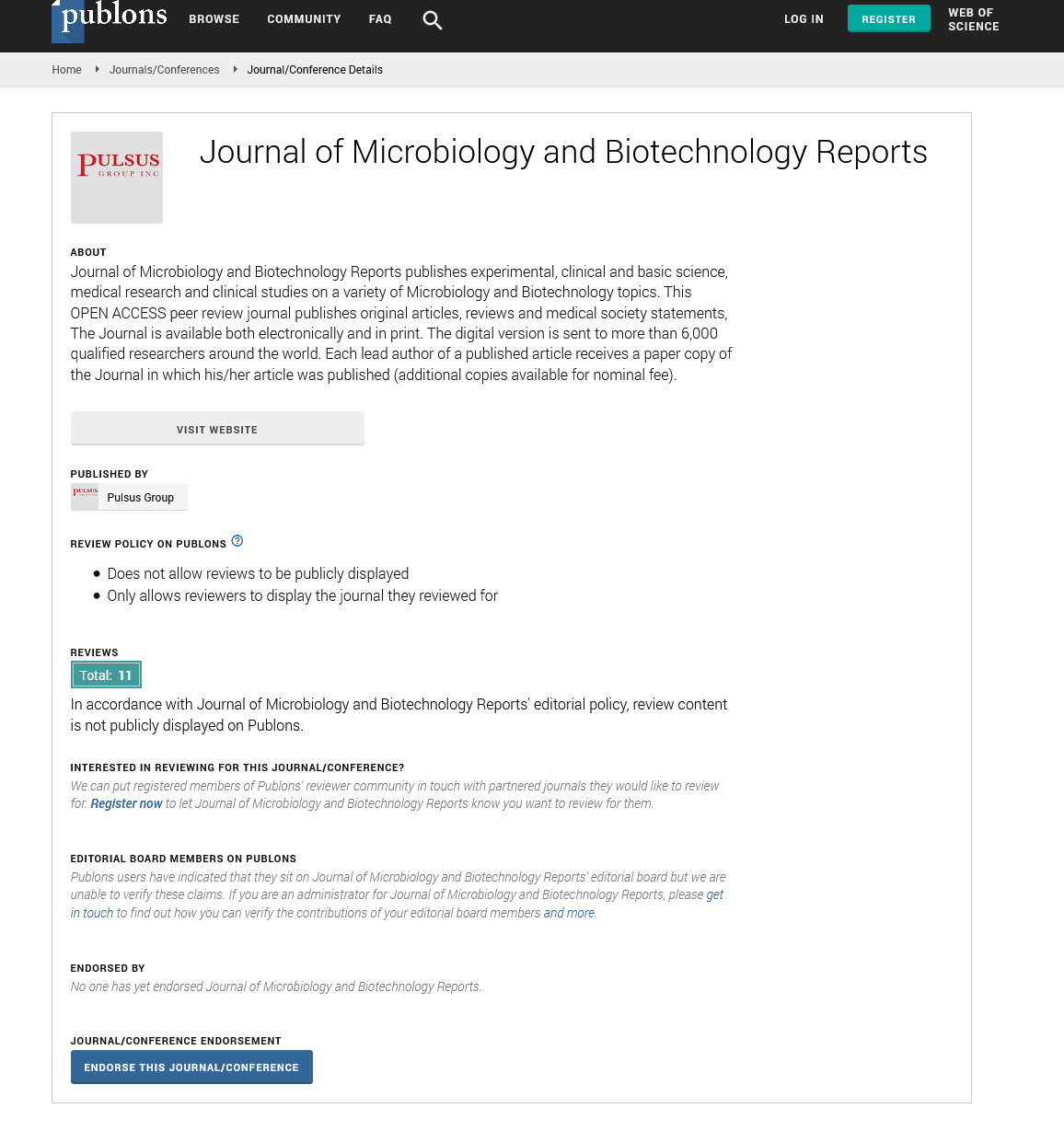
Sign up for email alert when new content gets added: Sign up
Screening Activated Sludge Microbiome for Azo Dye Containing Wastewater Treatments
8th World Biotechnology Congress
October 05, 2021 | Webinar
Cristiano J Andrade
Federal University of Santa Catarina, Brazil
ScientificTracks Abstracts: Microbiology and Biotechnology Reports
Abstract :
The effects of Azo dye-containing wastewater into the environment are devastating. Thus, it needs to be properly treated before its disposal – usually into water bodies. Activated sludge is an association among many (micro) organisms in a community, composed of aerobic and anaerobic bacteria and fungi that are dye-degrading (decolourization and mineralization). Nevertheless, there is a lack of information on specific degrading species, and their interaction themselves (Microbiome). This information can significantly enhance the azo dyecontaining wastewater treatments. Therefore, the aim of this study was to evaluate the bacterial community of an activated sludge sample from real textile industry, by isolating and identifying the Reactive Red 141-degrading bacteria strains. A wide range of bacteria species was identified by matrix-assisted laser desorption ionization-time of flight mass spectrometry (MALDI-TOF MS) including aerobic (Lysinibaciullus fusiformis) and facultative anaerobic (Escherichia coli). Preliminary data indicated the Azo-degrading potential of Bacillus thuringiensis and Kosakonia radicincitans. It is worth noting that this is the first report on K. radicincitans decolourization. Brain Heart Infusion (BHI), glucose, and RR-141 were used as carbon sources. However, only at BHI and glucose systems lead to decolourization activity, indicating that RR-141 cannot be used as carbon source. Both strains exhibited decolourization ability, reaching 43% decolourization in BHI by B. thuringiensis, and 21% in mineral medium with glucose by K. radicincitans. A yield above 40% was reached by applying them simultaneously at the same reaction medium, at non-optimal conditions. Synergy interactions between the microbial consortium, directly or indirectly, affected degrading yields and should be further investigated. Regarding phytotoxicity, a incomplete dye mineralization was observed. The degradation result solutions did not promote the germination of the seeds, which can be associated with the formation of toxic aromatic amines. The HPLC-MS analyses proved that the decolourization process was carried out, however, very likely, due to microbial adsorption.
Biography :
Andrade has plenty of experience on biotechnological processes, in particular fermentation, bacterial metabolism, bioproducts with high surfactant activity, purification processes (ultrafiltration), algae cultivation and green-based extraction methods, and identification of biomolecules by mass spectrometry. Dr. Andrade works as Professor in the Department of Chemical and Food Engineering (EQA)/ Federal University of Santa Catarina (UFSC), and also in the Graduate Program in Chemical Engineering at UFSC (PósEnq). Dr. Andrade has published 38 scientific articles, 13 book chapters, and 2 patent deposits.




